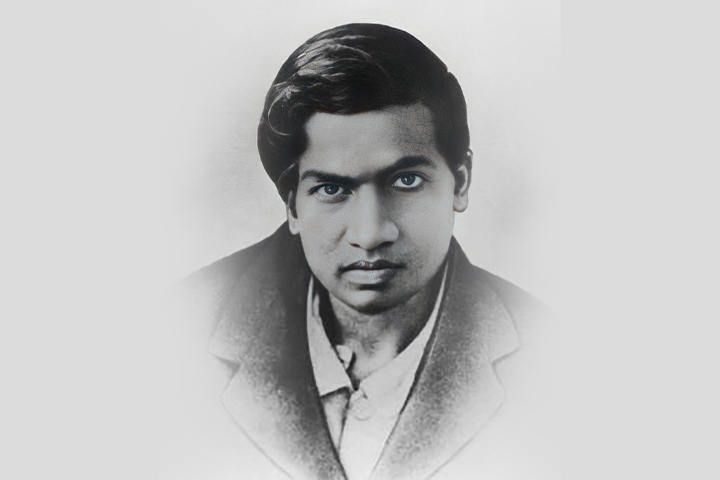Early Life
Srinivasa Ramanujan was born on December 22, 1887, in Erode, Tamil Nadu, India, into a modest family. His father, K. Srinivasa Iyengar, was a clerk in a local office, while his mother, Komalatammal, was a homemaker. From a young age, Ramanujan displayed an extraordinary aptitude for mathematics.
He attended school in Kumbakonam, where he quickly outpaced his peers in mathematical concepts. By the age of 10, he was already working with advanced mathematical ideas and showed a deep fascination with numbers. However, his academic performance in subjects other than mathematics was poor, leading to struggles in formal education.
Self-Taught Genius
Ramanujan's real education came from reading mathematical books on his own. One significant influence was "A Synopsis of Elementary Results in Pure and Applied Mathematics" by G. S. Carr, which he discovered while exploring the library. This book contained a wealth of mathematical formulas and theorems that captivated him and fueled his passion.
Despite his brilliance, Ramanujan faced challenges in gaining formal recognition. He pursued a scholarship at the University of Madras but failed his examinations due to his lack of focus on subjects outside mathematics. This setback did not deter him; instead, he continued to work independently on various mathematical problems, developing unique theories and results.
Breakthrough and Recognition
In 1913, Ramanujan made the bold decision to reach out to G.H. Hardy, a prominent mathematician at Cambridge University. He sent Hardy a letter filled with his findings, including several theorems and results that he had derived without any formal proofs. Hardy was initially skeptical but soon became fascinated by the depth and originality of Ramanujan's work. He recognized that Ramanujan's insights were groundbreaking and invited him to England.
Life in England
Ramanujan arrived in England in 1914, and his collaboration with Hardy began. Although he faced cultural differences, a harsh climate, and health challenges, Ramanujan thrived intellectually. He worked on various topics, including number theory, partition functions, and continued fractions.
One of his notable contributions during this period was the discovery of the Ramanujan Prime and the Ramanujan-Hardy Number (1729), which is famously known as the smallest number expressible as the sum of two cubes in two different ways. This number became iconic in mathematical circles.
Health Struggles
Despite his intellectual success, Ramanujan's health began to deteriorate in England. He suffered from various illnesses, including tuberculosis and vitamin deficiency, likely worsened by the cold climate and dietary restrictions as a strict vegetarian. Hardy was deeply concerned for Ramanujan’s health and encouraged him to return to India for recovery.
Return to India and Legacy
In 1919, Ramanujan returned to India, but his health continued to decline. He continued to work on mathematics, producing several remarkable results, including the famous "Ramanujan's notebooks," a collection of his discoveries. His contributions spanned various areas, including infinite series, modular forms, and number theory, many of which remain influential today.
Tragically, Ramanujan passed away on April 26, 1920, at the age of just 32. Despite his brief life, he left behind a rich legacy that has continued to inspire mathematicians worldwide.
Conclusion
Srinivasa Ramanujan’s life is a remarkable tale of innate talent, resilience, and a profound passion for mathematics. His story exemplifies how dedication and creativity can lead to extraordinary achievements, even in the face of overwhelming challenges. Ramanujan’s legacy endures through his mathematical discoveries and the inspiration he provides to countless individuals pursuing knowledge and innovation in mathematics.


.jpg)
 SEO, DIGITAL MARKETING & WEBSITE DEV.
SEO, DIGITAL MARKETING & WEBSITE DEV.


Social Plugin